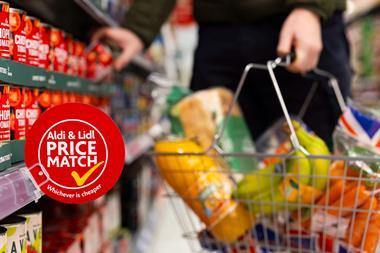
It would be incorrect to say we’ve come out of the pandemic feeling hardship is behind us. Whether you’re a brand, retailer or consumer, the next 12 months are going to be challenging. Oil, milk and grain prices have hit all-time highs, not to mention inflation hitting a 30-year peak.
As prices increase throughout the supply chain, marketing budgets are inevitably one of the first to be purged. So what can brands and retailers do to make sure every pound goes as far as possible towards driving sales in the coming months?
The current economic climate is going to hit certain consumers harder than others. Fifty-seven per cent of UK millennials, for example, express concern over their financial situation. Both millennials and gen Z have lived most of their adult lives with low interest rates and relative economic stability, versus the generations above who lived through the high interest rates of the 80s and 90s. On the flip side, baby boomers are set to pass on $68tn to their children, the largest generational wealth transfer ever.
What does this mean for brands? Although many brands want to recruit new customers from younger demographics, they need to think carefully about targeting and not discount those who will have higher confidence due to their historical economic experience. In order to pinpoint the audiences with the highest propensity to buy, brands need to turn to data. In recent months, more and more opportunities have arisen for brands to partner with retailers to share data, enabling not only tighter targeting, but better results through attribution models. From BMG’s A360 to Dunnhumby Sphere, this is only the start of a lot more to come in this arena.
With consumer confidence teetering, investment and spending habits will inevitably change too. Average households will see a fall in income of around £1,000 this year, driving inevitable changes in spending patterns, such as cutbacks on holidays, as seen in the last recession.
This nevertheless gives brands a behaviour to tap into. For instance, we know competition mechanics are a great alternative to price promotions when money is tight on both the brand side and consumer side. With a competition mechanic activated, brand uplift increases from £53 to £70 per store, with ROI following a similar trend. In fact, brand ROI on average hits £4.82 when running prize item giveaways. Of course, competitions are only one way to achieve this – brands can explore other mechanics such as money-back guarantees or gift with purchase to showcase value.
But none of this matters if your supply chain is so disrupted that you can’t anticipate when your product will even reach a shelf to activate with media. Commerce media can, however, offer an effective solution. Programmatic media allows for ultimate flexibility during times of disruption, allowing brands to dynamically adjust plans depending on stock levels and pricing. From social media to digital OOH, programmatic options offer flexibility, while driving strong performance on a relatively cost-effective basis.
On average, commerce media delivers significantly lower CPMs and higher overall ROI when directly compared with traditional ATL channels. Whilst these figures don’t dispute the importance of brand-building activity, they do highlight the importance of planning shelf-back to ensure every pound you spend is optimised towards where your product can be bought.
Whilst the world continues to go through a difficult time, innovation in the industry continues at a tremendous rate. If there’s one thing brands need to focus on, it will be using this time to test and learn, and not getting left behind. From commerce media to new programmatic opportunities, brands need to continue to optimise spend and use new innovations in data to become closer to their audience than ever before.



















No comments yet